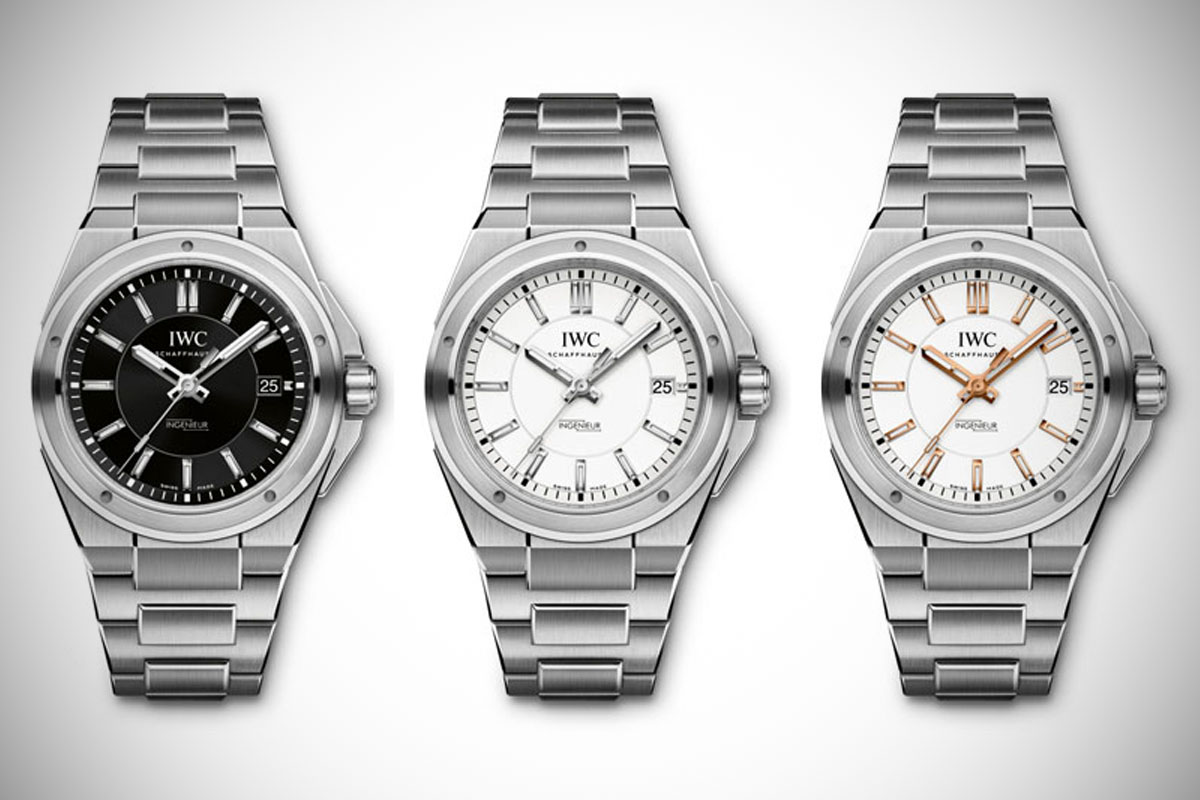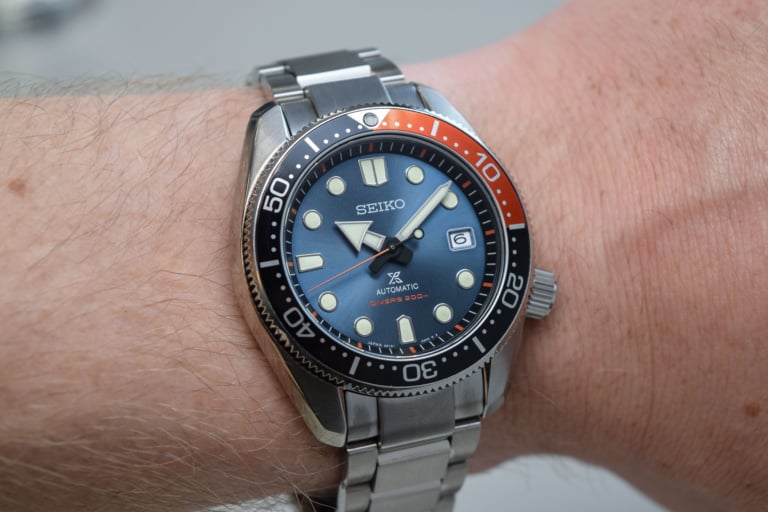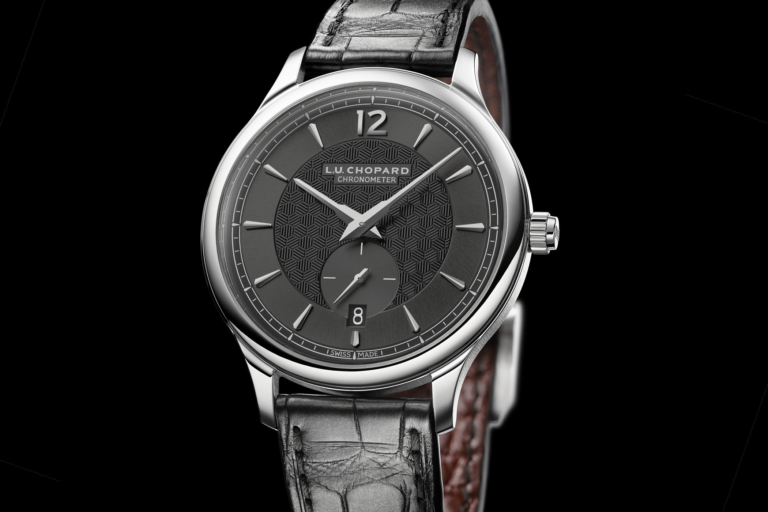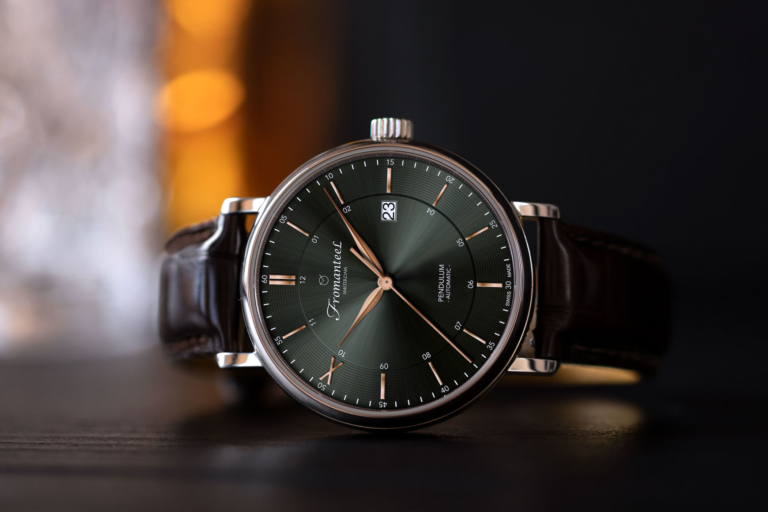WatchTime Wedesnday: The History of the IWC Ingenieur

Since 1954, the IWC Ingenieur belongs to the classical collection of IWC. Initially designed as a classical watch, it was however highly different from the other models on a technical basis. It was not obvious at that time that hte IWC Ingenieur was an entirely new and innovative collection. But in 1975, the recognition came with its new face, thanks to a genius designer called Gerald Genta. Here is the story of an icon, made together with our friends of WatchTime.
Since the mid-1950s, the IWC Ingenieur is synonym of a watch especially designed for scientists and technicians, providing them all the required specifications: water resistance, antimagnetic properties and high precisions had always been part of the package offered by the IWC Ingenieur.
Schaffhausen, 1954: The Birth of a classic
The IWC Ingenieur came on the market in 1954-55 under the references 666A and 666AD. It featured the calibre 852 (for the 666A) or calibre 8521 (for the 666AD), both created under the directions of Albert Pellaton, that was IWC’s Technical Director since 1944.

Equipped with the Pellaton winding system, the movement was inserted into a soft iron cage – the dial, the movement’s ring and the caseback cover were creating a protection against magnetic fields up to 80,000 amperes per meter (A/m). Thus, the IWC Ingenieur reached more than 16 times the resistance required by the Swiss norm for antimagnetic watches.

During the 1950s, the protection against magnetic fields was not exclusive to IWC and other brands showed some specific interests in this subject. Rolex, which was especially known for its dive watches (with the Oyster case and then the 1953 Submariner), also studied the idea of a scientist’s watch. And what they came with in 1954 is the now iconic Milgauss, under the reference 6541, a stainless steel watch with an Oyster case and a rotating bezel. And as its name refers to, it was protected against 1.000 gauss magnetic fields.
A military Mark XI transposed to civilian challenges
Looking at the original IWC Ingenieurs, the two references were very similar. The IWC Ingenieur 666A featured the hours, the minutes and a central second. The IWC Ingenieur 666AD only added a date window at 3. Both were civilian editions of the military IWC Mark XI, with a different dial and more elegant hands, creating a watch suitable for an everyday use.
Even the logo on the dial proudly evocates that the IWC Ingenieur defies a challenge. A lightning that indicates the protection against magnetic fields surrounds the word “Ingenieur”. For the rest, it remains a very classical watch. However, the Dauphine hands and lume plots ensure readability in difficult conditions. Besides legibility and antimagnetic properties, the IWC Ingenieur is also featuring a great protection against water, as it is can resist to a 100m depth, something very practical for engineers’ purposes but that was still a rarity during the 1950S.

The IWC Ingenieur was not only available in the classical stainless steel with bracelet edition but also in gold with a leather strap. The elegance of the dial and design was hiding a single technical goal: displaying an accurate time that was not disturb by external factors.
The Gerald Genta’s design
During the 1970s, the IWC Ingenieur began a new life, under the influence of a famous designer that created a revolution a few years before: Mister Gerald Genta. After designing the Audemars-Piguet Royal Oak in 1972, he’s been chose by IWC to bring the Ingenieur in modern times. Genta uses some of the codes already seen in the RO but adapted it to IWC’s demands.

The IWC Ingenieur came back with a completely new design. Its case, made of several parts, was presenting a tonneau shape with a round bezel (with the specific 5 holes, used to open the watch) and the guilloché dial (with its graph-paper structure). But even if the changes were impressive, the main objective of the 1976 IWC Ingenieur SL remains the same: a great legibility and a perfect timing capacity, regardless the external elements. It was also showing some of the typical Genta’s elements, such as an integrated bracelet and a large case, measuring 40mm. That size explains its nickname: IWC Ingenieur “Jumbo”. The main reference of this collection is of courser the self-winding edition, featuring the calibre 8541B, which uses an antimagnetic alloy, the Durochrone (an non-antimagnetic also exists, the calibre 8541ES). Also available was the Quartz edition under the ref. 3003.
Even if the shape had changes massively, the main specification is still there: the calibre 8541 has a protection against magnetic fields up to 80,000 A/m. This movement with date feature is know for its great precision. But this watch failed to achieve large sales figures. It arrived in the middle of the Quartz crisis – the first IWC Ingenieur designed by Genta was only produced to 1,000 pieces. But it also means that the 1976 IWC Ingenieur is highly collectible. It can reach more than 10,000Eur nowadays. Those watches were available in stainless steel, in a combination of steel and 14k gold and in full 18k yellow gold.
In 1983, IWC came with a new edition, the IWC Ingenieur SL, a thinner and smaller watch. But this new version also broke the tradition. It was the first to introduce an outsourced movement, instead of the in-house movement previously used. Inside the IWC Ingenieur SL was ticking an ETA 2892. The Schaffhausen manufacture however added a 21k gold rotor and superlative finishes – it was know under the name ‘Calibre 375’.

In 1989, IWC presented an impressive edition of the Ingenieur, based on a collaboration with military forces, in order to create a watch resistant to extremely strong magnetic fields. The IWC Ingenieur 500,000 A/m came with an enormous protection but without any soft iron cage. The escapement, the balance wheel and the spiral (the elements that are particularly sensitive to magnetism) were using alternative and innovative materials, such as niobium-zirconium 25, an iron-free and nickel-free alloy. Even if showing an extremely exiting technology, these watches were not free of problems. The costs for research and development were very high. The reliability was also problematic, as most the balance springs failed to pass the test-runs. The production of the IWC Ingenieur 500,000 A/m ended at the very beginning of the 1990s, after only 3,000 units produced. These surprisingly subtle watches (only 34mm in diameter) are now extremely collectible.

In 1991, the IWC Ingenieur added a new technology: the Mechaquarz movements. Those editions featured the calibre 633, manufactured by LMH-Jaeger-LeCoultre. It was combining a quartz movement to a mechanical chronograph mechanism and an alarm function.

The actual collections of the IWC Ingenieur are still relying on the typical Genta’s design. However, alongside the classical automatic edition (only a 3-hand with date), now we can find several complicated watches, such as the perpetual calendar or chronograph slipt-second. These watches are inspired by the original model in terms of design, but they are far away in terms of main objective. The IWC Ingenieur had been designed as an apparently simple 3-hand watch but with a large technical content (legibility, water resistance, antimagnetic properties). It is now more a game-field for IWC that uses its iconic design in fashionable or exclusive editions. Hopefully, IWC knows about it and reissued the classical 1950s Ingenieur in 2008 and the simple 3-hand that uses Genta’s shape is still part of the collection.

The original article was published on watchtime and is republished here with permission.



